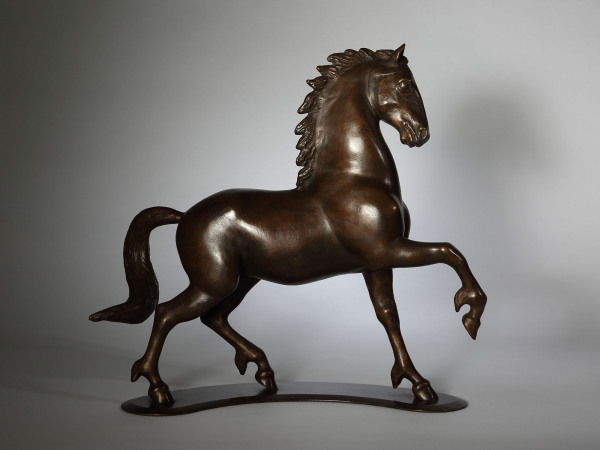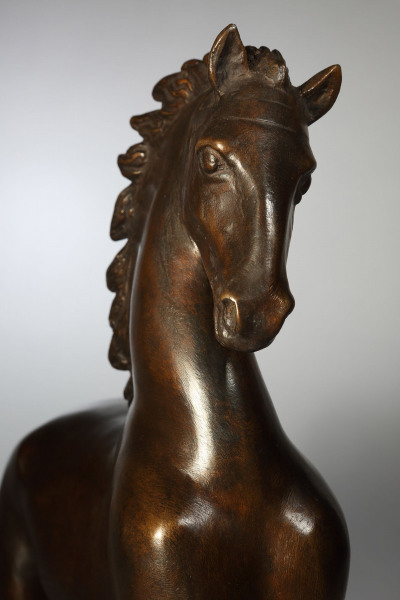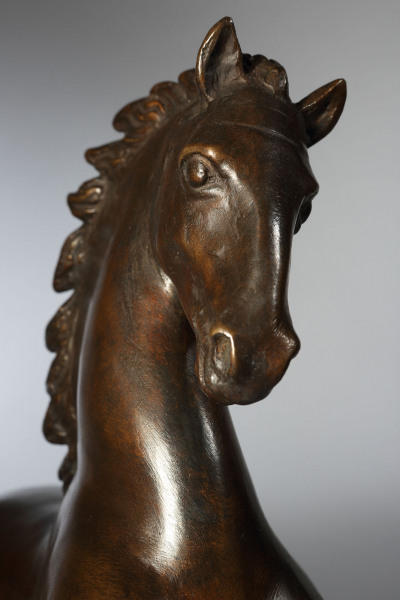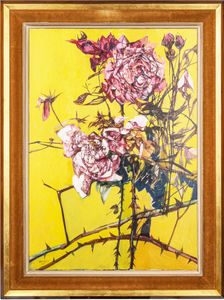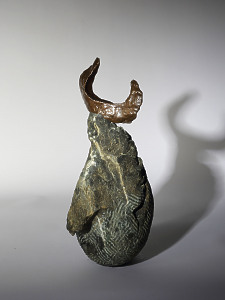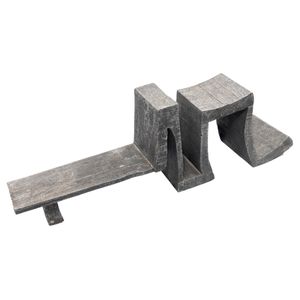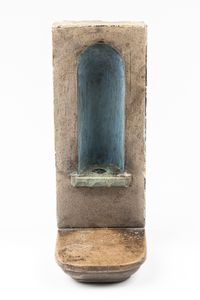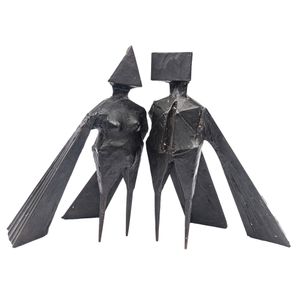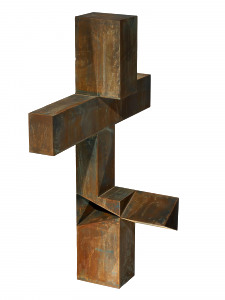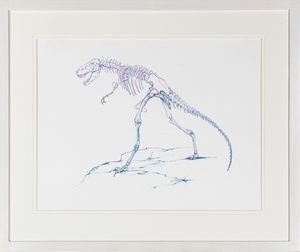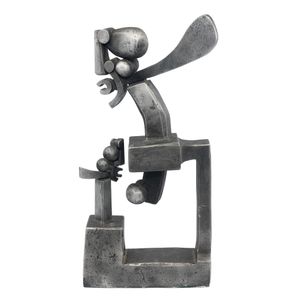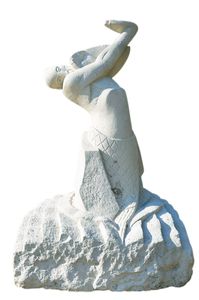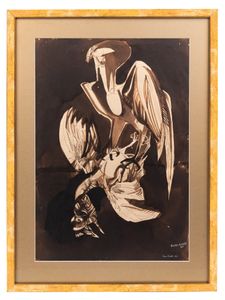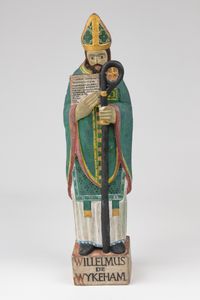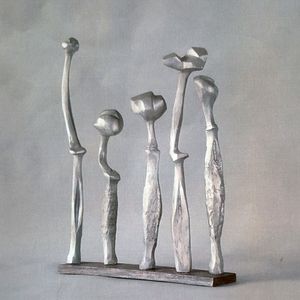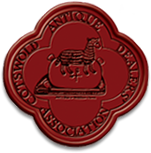'La Poliche Libre' Charles Pilkington Jackson 1887 – 1973
'La Poliche Libre' Charles Pilkington Jackson 1887 – 1973
1971
Height
38.50cm
[15.16 inches]
Width 42.00cm [16.54 inches]
Depth 10.00cm [3.94 inches]
Width 42.00cm [16.54 inches]
Depth 10.00cm [3.94 inches]
Sold
Artist's Resale Right applies @ 4%
Bronze
Engraved ‘PJ 71 La Poliche Libre Nu 5/10’
Date 1971
Edition No 5 of 10
Charles Pilkington d’Orville Jackson 1887 – 1973
Possibly the longest name for a sculptor, Jackson, ‘PJ’ as
he was known, was born in Cornwall but after studying
Design & Sculpture at the Edinburgh College of Art
1905 – 10 and completing a Travelling Scholarship to the
British School in Rome, returned to Scotland to make
it his home. In 1911 he set up a studio in Edinburgh
with bronze founder William McDonald, exhibiting at
the Royal Academy that same year. Working primarily
on projects with architects, his working life was
subsequently, like so many, directed by the two Wars.
He served with the Ayrshire Field Artillery in both
Egypt and Palestine (mentioned in dispatches), returning
to complete memorial work throughout Scotland,
including a collaborative effort on a series of 82 military
statuettes for the Scottish United Services Museum
Edinburgh, and as ‘Supervising Sculptor’ for the Scottish
National War Memorial. Latterly, aged 52, he served as
a Gun Operations Room Officer in the Second World
War. │ The bronze here is an editioned maquette for a
never completed commission ‘La Poliche Libre’, it was
made in the last years of his long career and shows a
man of his time working in his own style, here with a
nod to the Renaissance equestrian bronzes. │ From
1945 he continued to take commissions, however, it
is the equestrian bronze ‘The Bruce at Bannockburn’
1964 that he is best be remembered. The large scale
work is the focal point of the Battle of Bannockburn
(1314) Memorial, sited to face southwards, from which
direction the English Army approached. PJ, known
to be meticulous in his research, paid great attention
to accuracy, used measurements of Bruce’s skull rediscovered
at Dunfermline Abbey in 1818 as model
for the work. Pilkington Jackson exhibited regularly
at the Royal Scottish Academy and was elected as an
Academician in 1956.
Bronze
Engraved ‘PJ 71 La Poliche Libre Nu 5/10’
Date 1971
Edition No 5 of 10
Charles Pilkington d’Orville Jackson 1887 – 1973
Possibly the longest name for a sculptor, Jackson, ‘PJ’ as
he was known, was born in Cornwall but after studying
Design & Sculpture at the Edinburgh College of Art
1905 – 10 and completing a Travelling Scholarship to the
British School in Rome, returned to Scotland to make
it his home. In 1911 he set up a studio in Edinburgh
with bronze founder William McDonald, exhibiting at
the Royal Academy that same year. Working primarily
on projects with architects, his working life was
subsequently, like so many, directed by the two Wars.
He served with the Ayrshire Field Artillery in both
Egypt and Palestine (mentioned in dispatches), returning
to complete memorial work throughout Scotland,
including a collaborative effort on a series of 82 military
statuettes for the Scottish United Services Museum
Edinburgh, and as ‘Supervising Sculptor’ for the Scottish
National War Memorial. Latterly, aged 52, he served as
a Gun Operations Room Officer in the Second World
War. │ The bronze here is an editioned maquette for a
never completed commission ‘La Poliche Libre’, it was
made in the last years of his long career and shows a
man of his time working in his own style, here with a
nod to the Renaissance equestrian bronzes. │ From
1945 he continued to take commissions, however, it
is the equestrian bronze ‘The Bruce at Bannockburn’
1964 that he is best be remembered. The large scale
work is the focal point of the Battle of Bannockburn
(1314) Memorial, sited to face southwards, from which
direction the English Army approached. PJ, known
to be meticulous in his research, paid great attention
to accuracy, used measurements of Bruce’s skull rediscovered
at Dunfermline Abbey in 1818 as model
for the work. Pilkington Jackson exhibited regularly
at the Royal Scottish Academy and was elected as an
Academician in 1956.




